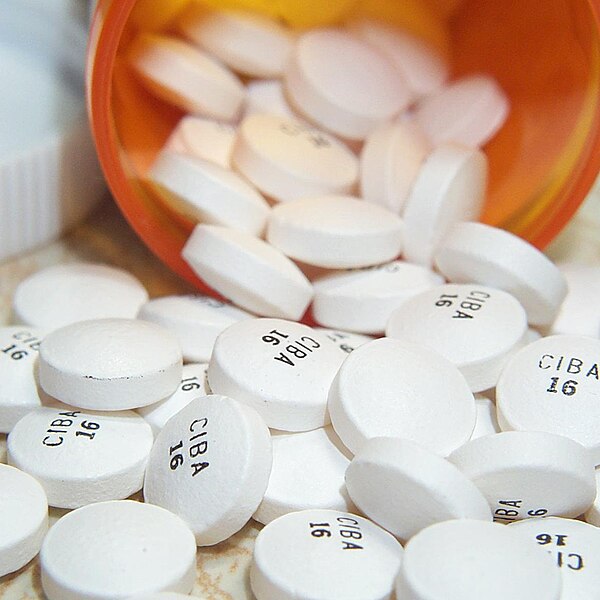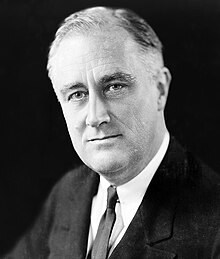The regulation of therapeutic goods, that is drugs and therapeutic devices, varies by jurisdiction. In some countries, such as the United States, they are regulated at the national level by a single agency. In other jurisdictions they are regulated at the state level, or at both state and national levels by various bodies, as is the case in Australia.
The role of therapeutic goods regulation is designed mainly to protect the health and safety of the population. Regulation is aimed at ensuring the safety, quality, and efficacy of the therapeutic goods which are covered under the scope of the regulation. In most jurisdictions, therapeutic goods must be registered before they are allowed to be marketed. There is usually some degree of restriction of the availability of certain therapeutic goods depending on their risk to consumers.
Regulation by country

Australia
Therapeutic goods in Australia are regulated by the Therapeutic Goods Administration (TGA). The availability of drugs and poisons is regulated by scheduling under individual state legislation, but is generally under the guidance of the national Standard for the Uniform Scheduling of Drugs and Poisons (SUSDP).
Under the SUSDP, medicinal agents generally belong to one of five categories:
- Unscheduled/exempt
- Schedule 2 (S2) - Pharmacy Medicines
- Schedule 3 (S3) - Pharmacist Only Medicines
- Schedule 4 (S4) - Prescription Only Medicines
- Schedule 8 (S8) - Controlled Drugs
Brazil
Therapeutic goods in Brazil are regulated by the Brazilian Health Ministry, through its National Health Surveillance Agency (equivalent to USA's FDA). There are 5 main categories:
- Normal Medicines - Cough, cold and fever medicines, antiseptics, vitamins and others. Sold freely in pharmacies and some large supermarkets.
- Red Stripe Medicines - These medicines are sold only with medical prescription. Antibiotics, Anti allergenics, Anti inflammatories, and other medicines. In Brazil, governmental control is loose on this type; it is not uncommon to buy this type of prescription medicine over the counter without a prescription.
- Red Stripe Psychoactive Medicines - These medicines are sold only with a "Special Control" white medical prescription with carbon copy, which is valid for 30 days. The original must be retained by the pharmacist after the sale and the patient keeps the carbon copy. Drugs include anti-depressants, anti-convulsants, some sleep aids, anti-psychotics and other non-habit-inducing controlled medicines. Though some consider them habit inducing, anabolic steroids are also regulated under this category.
- Black Stripe Medicines - These medicines are sold only with the "Blue B Form" medical prescription, which is valid for 30 days and must be retained by the pharmacist after the sale. Includes sedatives (benzodiazepines), some anorexic inducers and other habit-inducing controlled medicines.
- "Yellow A Form" prescription medicines - These medicines are sold only with the "Yellow A Form" medical prescription - the most tightly controlled, which is valid for 30 days and must be retained by the pharmacist after the sale. Includes amphetamines and other stimulants (such as methylphenidate), opioids (such as morphine and oxycodone) and other strong habit-forming controlled medicines.
Canada
In Canada, regulation of therapeutic goods are governed by the Food and Drug Act and associated regulations. In addition, the Controlled Drugs and Substances Act requires additional regulatory requirements for controlled drugs and drug precursors.
China
The regulation of drugs in China is governed by the China Food and Drug Administration.
Europe
United Kingdom
Medicines for Human Use in the United Kingdom are regulated by the Medicines and Healthcare products Regulatory Agency (MHRA). The availability of drugs is regulated by classification by the MHRA as part of marketing authorisation of a product.
The United Kingdom has a three-tiered classification system:
- General Sale List (GSL)
- Pharmacy medicines (P)
- Prescription Only Medicines (POM)
Within POM, certain agents with a high abuse/addiction liability are also separately scheduled under the Misuse of Drugs Act 1971 (amended with the Misuse of Drugs Regulations 2001); and are commonly known as Controlled Drugs (CD).
Norway
Medicines in Norway are divided into five groups:
Class A Narcotics, sedative-hypnotics, and amphetamines in this class require a special prescription form:
- morphine and its immediate family, heroin, desomorphine, nicomorphine;
- codeine and its immediate family, dihydrocodeine, ethylmorphine, nicocodeine;
- morphine relatives: hydromorphone and oxymorphone;
- codeine relatives: hydrocodone and oxycodone;
- synthetic opioids: pethidine, methadone, fentanyl, and levorphanol;
- various sedative-hypnotics: temazepam, methaqualone, pentobarbital, and secobarbital;
- various stimulants: amphetamines and methylphenidate;
- flunitrazepam (moved from class B)
Class B Restricted substances which easily lead to addiction like:
- co-codamol
- diazepam
- nitrazepam
- all other benzodiazepines (with the exception of temazepam and flunitrazepam)
- phentermine
Class C - All prescription-only substances
Class F - Substances and package-sizes not requiring a prescription
Unclassifieds - Brands and packages not actively marketed in Norway
Iceland
Medicines in Iceland are regulated by the Icelandic Medicines Control Agency [2].
Ireland
Medicines in the Republic of Ireland are regulated according to the Misuse of Drugs Regulations 1988. Controlled drugs (CD's) are divided into five categories based on their potential for misuse and therapeutic effectiveness.
- CD1: cannabis, lysergamide, coca leaf, etc. Use prohibited except in limited circumstances where a license has been granted.
- CD2: methadone, morphine, fentanyl, oxycodone, tapentadol, etc. Prescriptions must be handwritten and are only valid for 14 days. Repeat prescriptions are not permitted. Drugs must comply with safe custody and destruction of unsold/unused medication must be witnessed. Must be registered in a Controlled Drugs register.
- CD3: temazepam, flunitrazepam, etc. As CD2, except witnessed destruction and CD register are not required.
- CD4: benzodiazepines, e.g. diazepam, nitrazepam, low dose (methyl)phenobarbitone
- CD5: low-dose codeine, etc.
Switzerland
Medicines in Switzerland are regulated by Swissmedic. The country is not part of the European Union, and is regarded by many as one of the easiest places to conduct clinical trials on new drug compounds.
There are 5 categories from A to E to cover different types of delivery category:
- A: Supply once with a prescription from a doctor or veterinarian
- B: Supply with a prescription from a doctor or veterinarian
- C: Supply on technical advice from medical staff
- D: Supply on technical advice
- E: Supply without technical advice
India
Medicines in India are regulated by CDSCO - Central Drugs Standard Control Organization Under Ministry of Health and Family Welfare. Headed by Directorate General of Health Services CDSCO regulates the Pharmaceutical Products through DCGI - Drugs Controller General of India at Chair. Under Retail and Distribution:- Drugs classified under 5 heads 1. Schedule X drugs â€" Narcotics 2. Schedule H and L â€" Injectables, Antibiotics, Antibacterials 3. Schedule C and C1- Biological Products-example Serums and Vaccines
Under Manufacturing Practice 1. Schedule N List of the equipment for the efficient running of manufacturing wing, Qualified personnel 2. Schedule M
United States
Therapeutic goods in the United States are regulated by the U.S. Food and Drug Administration (FDA), which makes some drugs available over the counter at retail outlets and others by prescription only.
The possession of some substances is prohibited by scheduling under the Controlled Substances Act, under the joint jurisdiction of the FDA and the Drug Enforcement Administration (DEA).
See also

- Council for International Organizations of Medical Sciences (CIOMS, WHO)
- Counterfeit drug
- Drug Efficacy Study Implementation (DESI)
- Drug prohibition law
- International Conference on Harmonisation of Technical Requirements for Registration of Pharmaceuticals for Human Use
- Inverse benefit law
- Over-the-counter drug
- Prescription drug
- Uppsala Monitoring Centre (WHO)
- Validation (drug manufacture)
- World Health Organization
European Union
- EudraLex, the collection of rules and regulations governing medicinal products in the European Union
- Directive 65/65/EEC1, requires prior approval for marketing of proprietary medicinal products
- Directive 75/318/EEC, clarifies requirements of 65/65/EEC1 and requires member states to enforce them
- Directive 75/319/EEC, requires marketing authorization requests to be drawn up only by qualified experts
- Directive 93/41/EEC, establishes the European Agency for the Evaluation of Medicinal Products
- European Medicines Agency
- Directive 2001/20/EC, defines rules for the conduct of clinical trials
- Directive 2001/83/EC
- Directive 2005/28/EC, defines Good Clinical Practice for design and conduct of clinical trials
References

External links
- Central Drugs Standard Control Organisation(India)
- Presentation on Drug License Audit Process in India




0 komentar :
Posting Komentar